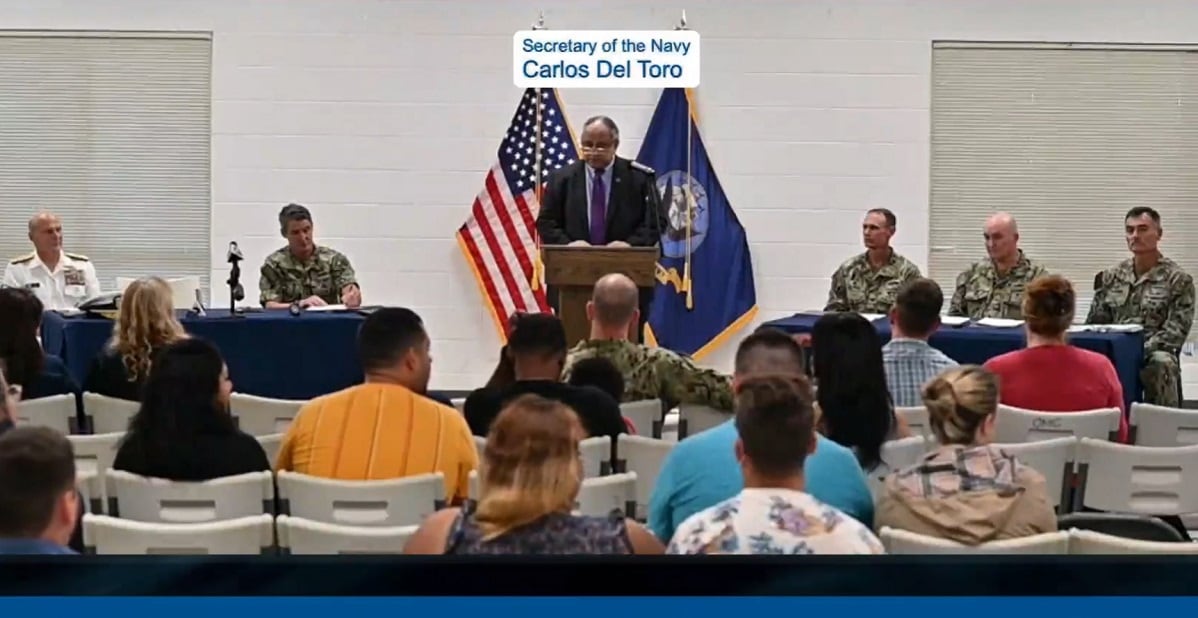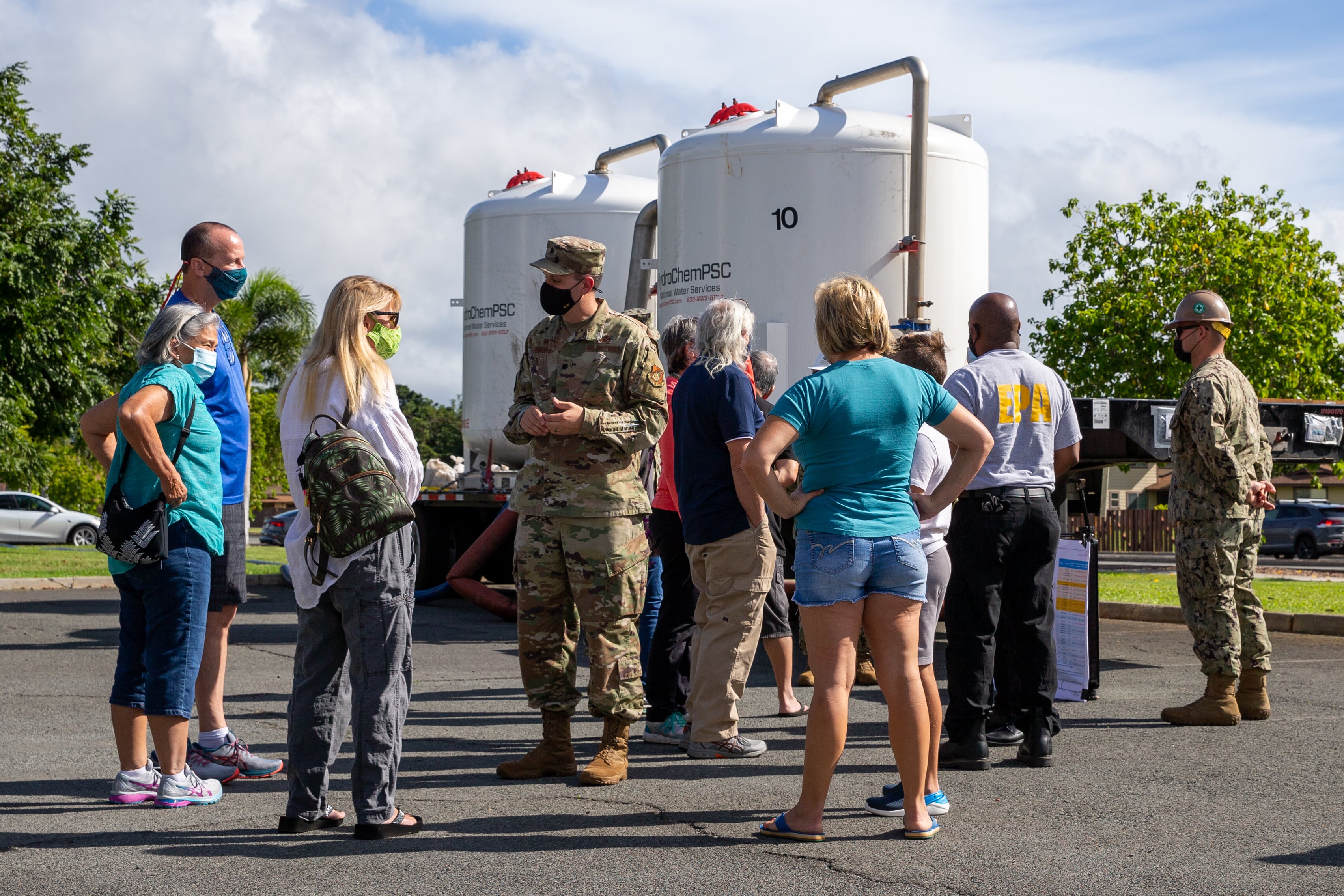Another 1,002 military family members and civilians filed administrative claims against the government Tuesday, seeking monetary damages related to fuel-contaminated drinking water in Hawaii.
Under the Federal Tort Claims Act, they allege the Navy released jet fuel and other contaminants from the Red Hill Bulk Fuel Facility into the families’ drinking water at least twice in 2021 — May 6 and Nov. 20 — and didn’t immediately disclose the incidents.
This brings the total to 1,499 administrative claims filed against the Navy, said Kristina Baehr, founder of Just Well Law, one of three law firms representing nearly 3,000 people affected by the water crisis. These SF-95 administrative claims are required before individuals can sue the government. If their claims are denied, they will join the pending federal court lawsuit in Honolulu. To date, the government hasn’t granted any of the administrative claims, Baehr said. The claims are generally seeking monetary damages related to medical issues and medical monitoring now and possibly for the rest of their lives.
“The Navy has accepted responsibility for contaminating our clients’ drinking water with jet fuel,” Baehr said. “But the Navy refuses to accept responsibility for any long-term harm. These claims offer the Navy an opportunity to make it right, just as they have promised.”
Navy officials in Hawaii didn’t comment before publication, but in the past officials have declined to comment on these cases, citing pending litigation.
More clients are contacting the attorneys every day, Baehr said. The statute of limitations for filing the administrative claims expires in November, and the attorneys expect to continue taking clients until Aug. 15, to allow enough time to meet the deadline. “I want to be sure we get what we need from people to file their claims,” she said.
There are currently 296 plaintiffs in the federal case, she said. Baehr’s firm, Just Well Law, the Hosoda Law Group and Motley Rice LLC are representing the people alleging they were affected by the tainted water.
All told, more than 93,000 individuals were affected, from 9,715 households in 19 different communities on the Navy water system of Joint Base Pearl Harbor-Hickam. They include residents of two Army communities and Air Force communities in the Hickam side. Some Hawaiian civilians were also affected, living in homes supplied by Navy water.
On Nov. 28, 2021, military families reported smelling fuel odors and seeing an oily film in their tap water. But some had reported mysterious abdominal pain, vomiting, memory loss, skin rashes, eye irritation, and teeth and gum issues even before the signs of fuel appeared. At first, Navy officials told residents it was okay to drink the water.
“The Navy knew that there was fuel in the water and yet reassured residents for days that ‘there was no indication that the water was not safe to drink,’” Baehr said.
RELATED

She said 67% of her firm’s clients are still experiencing health problems after the 2021 contaminations.
“The majority of my clients are still sick more than 18 months later,” she said. “And yet this was entirely preventable — if only the Navy had told them to stop drinking the water that the Navy knew was contaminated.”
Two-thirds of their clients have experienced neurological symptoms, and two-thirds have had skin problems; 56% have had reported gastrointestinal problems; and 41% respiratory problems, Baehr said.
Nearly half of the firm’s clients have moved out of their contaminated houses. Of those who stayed, 83% couldn’t afford to leave. Of those who moved, 87% moved off the island, she said. In addition, 12% of their clients have lost wages related to the crisis.
In early December, 2021, military officials offered families the option to move to hotels at government expense, and thousands did so. Water, laundry services and shower facilities were provided to those who chose to stay in their houses.
After massive flushing operations and testing — overseen by a joint working group of experts from the Navy and Army, the Hawaii Department of Health, and the Environmental Protection Agency — the water in the last of 19 zones was declared safe to drink on March 18, 2022.
On March 7, 2022, Secretary of Defense Lloyd Austin announced his decision to close the Red Hill Bulk Fuel Storage Facility, and to remove the fuel reserves from the 20 underground tanks, redistributing the fuel across the Indo-Pacific region. Officials have begun the process to defuel and shut down the tanks.
Karen has covered military families, quality of life and consumer issues for Military Times for more than 30 years, and is co-author of a chapter on media coverage of military families in the book "A Battle Plan for Supporting Military Families." She previously worked for newspapers in Guam, Norfolk, Jacksonville, Fla., and Athens, Ga.




